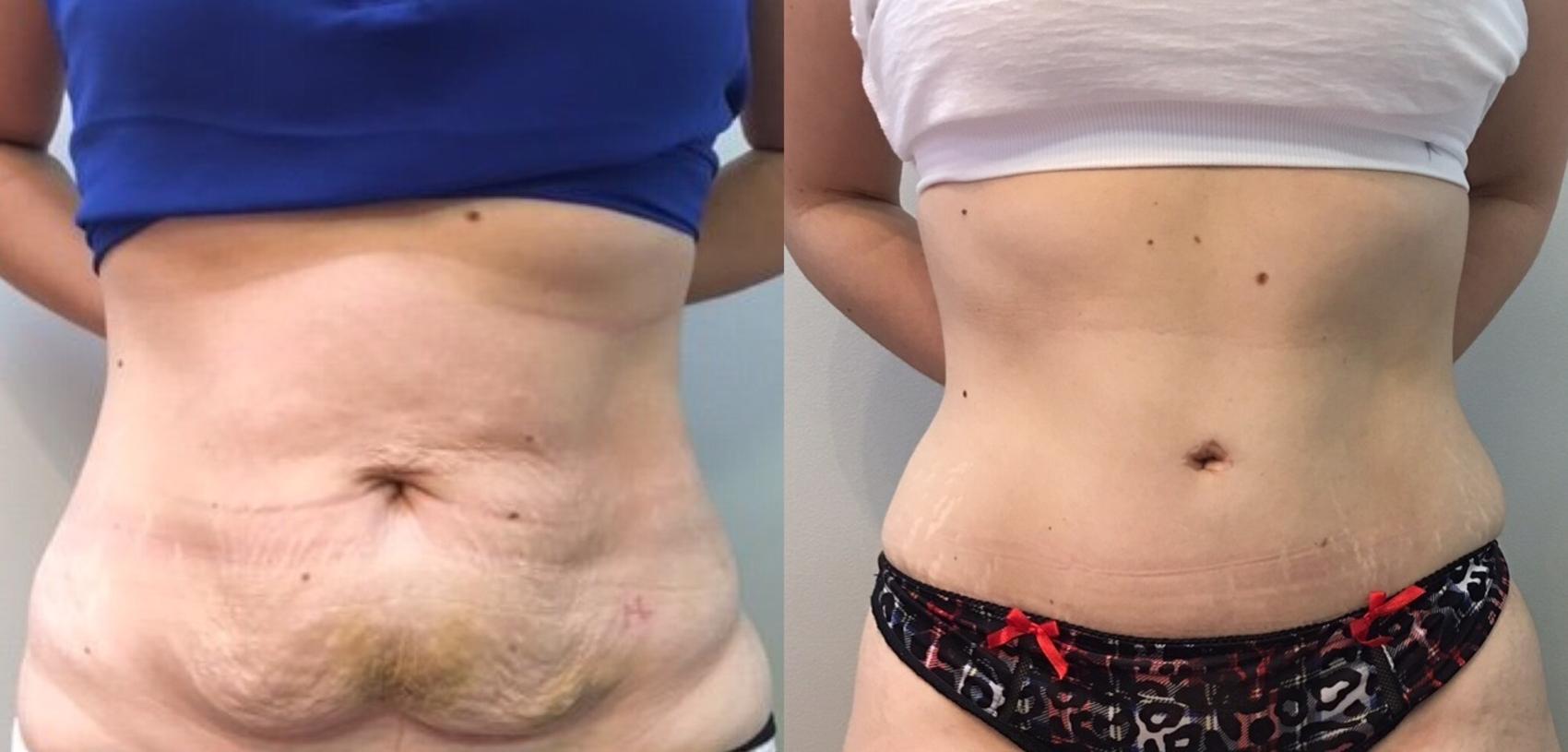Confused about the differences between a tummy tuck and liposuction and aren’t sure which one you need? This blog post breaks down 5 key differences to help you decide between liposuction vs. a tummy tuck before covering why a combination approach is often best.
#1. Candidates
- Liposuction: Men and women who benefit from liposuction are typically in good overall shape and want to tone and contour areas that don’t respond to diet and exercise alone. A good liposuction candidate is at or close to ideal weight.
- Tummy Tuck: Excess abdominal skin and fat is the telltale sign of good tummy tuck candidates. The procedure is often a good choice for men and women who have lost significant weight; it is most commonly performed on women who have had children.
#2. Treatment Areas
- Liposuction: Head-to-toe isn’t quite accurate, but it’s close. Liposuction removes excess fat from areas large (e.g., abdomen, buttocks, lower back) and small (e.g., knees, fat just below the chin). Hips, thighs, and upper arms are also common liposuction treatment areas.
- Tummy Tuck: As its name implies, a tummy tuck specifically targets the abdominal area. A full tummy tuck involves removing excess skin above the bellybutton, which is repositioned, and, if needed, repairing abdominal muscles stretched by pregnancy (a condition called diastasis recti).
#3. The Procedure
- Liposuction: A liposuction procedure may take 1 to 3 hours, depending on the size of the target area(s). It’s performed using a local anesthetic, unless the surgeon will be addressing large treatment areas. In addition, the incisions are very small.
- Tummy Tuck: A tummy tuck is fairly major surgery and is performed using general anesthesia. It typically takes about 2 ½ hours. The incisions can be quite extensive, although every effort is taken to place them as inconspicuously as possible.
#4. The Recovery
- Liposuction: This also depends on the extent of the treatment. In some cases involving only small treatment areas, a patient can return to work after 24 hours. Generally, though, patients who get liposuction on the tummy, flanks, or thighs may need to take 7 to 10 days off from work. You may need to wear a compression garment for a few days, and it will be 2 to 4 weeks before you can safely return to workouts and more vigorous activities. Full recovery may last between 1 to 6 months.
- Tummy Tuck: The healing process is more involved following tummy tuck surgery. Patients wear an abdominal binder for the first 6 weeks and should plan on taking a minimum of 2 weeks off from work. Some people need up to a month to recover before returning to work. Resuming activities, including exercise, takes 4 to 6 weeks.
#5. The Results
- Liposuction: Most liposuction patients are already in fairly good shape and can maintain their results by exercising regularly and eating a healthy, nutritious diet.
- Tummy Tuck: Exercise and diet can also help maintain the results of a tummy tuck. For women in their childbearing years, getting pregnant after having a tummy tuck can compromise the results. Dr. Weinberg advises female patients to consider delaying a tummy tuck until they are certain they do not want more children.
Why Not Choose Both?
Many patients find that they can get their best results from a combination approach. That’s because the goals of the 2 procedures are often complementary: Liposuction can sculpt the final touches after a tummy tuck. If you’d like to slim and smooth your abdomen, this dual approach may be right for you.
To start your body contouring transformation, please call us at (905) 273-3045 in Mississauga, or (416) 207-9090 in Toronto or request a consultation online.







I’m interested in botox for larger
Lips. Price and how long do they stay plump